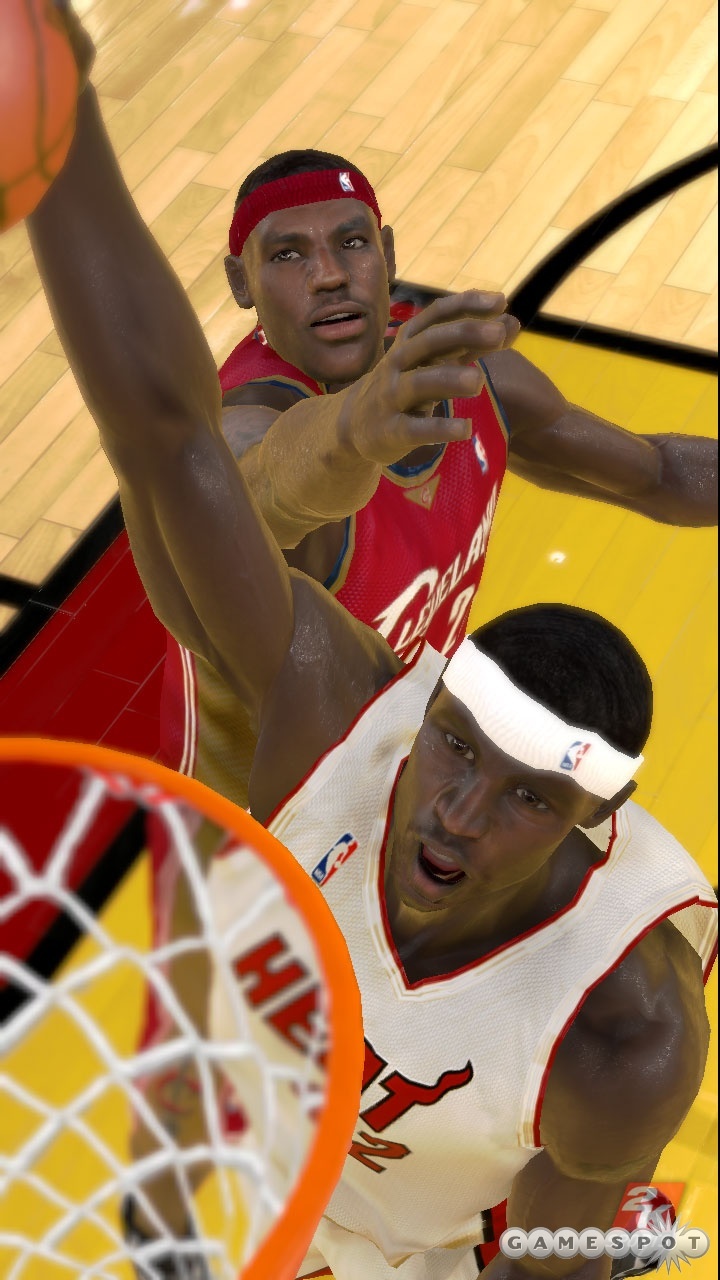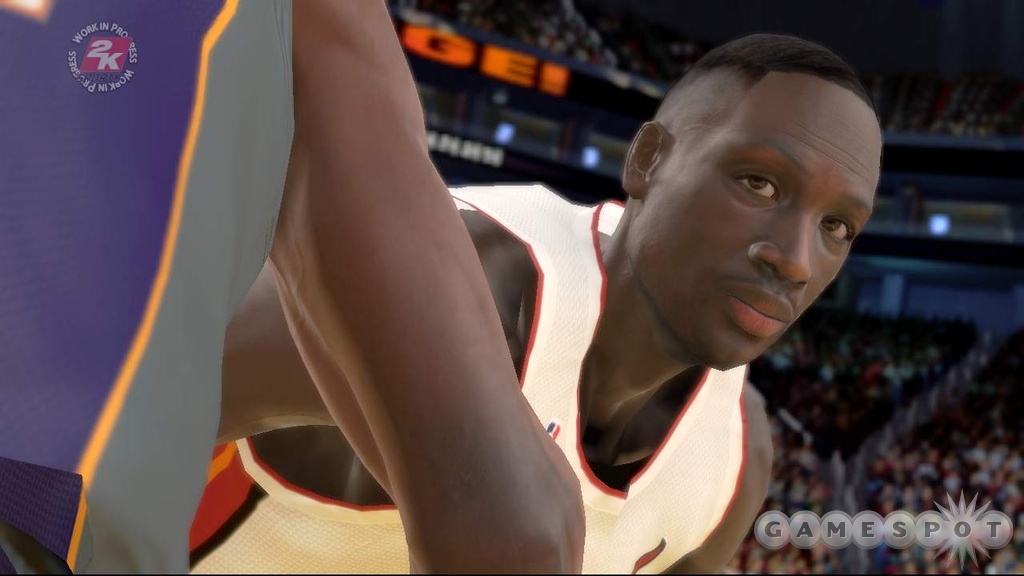NBA 2K6 Developer Q&A
How do you bring Shaq and T-Mac to life? NBA 2K6 senior artist Anton Dawson explains how in our Q&A.
We all know the next generation of sports games will look amazing--a quick peek at a few screenshots or gameplay videos will tell you that. When it comes down to creating that realistic look and feel that sports fans demand from their games, the job of a game-development art team becomes even more complicated as the technology on which those games are played improves. In the case of NBA 2K6, we know that the player models, uniforms, lighting, and stadiums are all truly of next-generation quality. But what was it like to build those models and environments from the ground up? Which graphical elements truly stand out as "next generation"? For the answers, we turned to 2K Sports senior artist Anton Dawson, who gave us a behind-the-scenes look at the process of creating 2K6's visual style.
GameSpot: What are you hoping to accomplish with your first next-generation basketball game?

Anton Dawson: I think one of the biggest accomplishments is that we have made a game that people will have a lot of fun with. Gameplay is always a huge priority--to make sure it continues to be fun. The other important factor that next gen really enables is the ability to capture more realism than ever before. We really strove to make this game as real as possible so people would want to play as long as possible. Doing this meant reconstructing everything from scratch, including player skeletons, muscle systems, skin and sweat, cloth simulation, lighting, AI, and animation. The more things we changed, the more the things we didn't change stood out. So we ended up improving everything.
GS: Were there any key gameplay/graphical elements you felt the game had to have?
AD: We did some early tests of a model where we separated the motion of the uniform from the motion of the body using cloth simulation. It was surprising what a difference this made in making the players come to life. At the time, we had no idea how it would possibly happen in real time. But everyone agreed it needed to. We also felt the motion-capture and animation system needed to be redesigned to allow lossless transfer of motion from actor to character. We needed a human anatomy system to ensure that the cloth collided with a real form, rather than being a means to hide parts of the model. We needed lighting sampled from real NBA arenas. We needed sweat. Depth of field was absolutely necessary.
GS: How do you compare developing for the 360 to developing for the original Xbox?
AD: The original Xbox definitely provided some big visual advances, primarily in the areas of specularity and in the ability to use normal maps. Many games really wanted to hype these aspects, sometimes resulting in very bumpy and/or shiny characters. The biggest difference with 360 is that instead of having just a couple of visual tricks to add, there are dozens. It requires layering all of these things on top of one another to make a total package, even if each one in isolation may be hard to spot. The challenge is turning things up enough so people will notice, without turning them so high that they're not subtle enough to look real.
GS: If you could point to one specific feature of NBA 2K6 as truly indicative of "next-generation" consoles, which feature would it be, and why?
AD: It's not easy to separate all of the elements that are working in concert and identify which is the most indicative of "next-generation" consoles. As we're tuning the visuals, we like to have a real game playing on a monitor next to a build of our game. What feels "next generation" to me is when we can't immediately spot the difference between the two.
GS: Is there a graphical feature in the game--lighting, frame rate, textures, etc.--that you are particularly proud of that might not be as obvious to players?
AD: Real-time dynamic ambient occlusion. When the players raise their arms near their heads, for example, both the head and arms will darken slightly because they are not able to receive the same amount of light as before. It's continually happening all over the player models throughout the game. It is much less obvious than a cast shadow, and harder to spot, but when you turn it off, the difference is dramatic.
GS: One of the most striking aspects of the game is the character models. Could you tell us about how those have come together, and the work involved in making them look and move well?

AD: On the players' bodies, we initially reworked our motion-capture pipeline and developed a "lossless" player skeleton to ensure that we retained every bit of nuance and secondary motion from a capture session. Then we built character rigs that ensured that polygons wouldn't crash into each other. We layered a muscle system on top to ensure that the shape of the body was correct, regardless of the position they were in. We then drove the skin with this system, attempting to make sure it moved like real tissue. Finally, we developed complex layered skin shaders to replicate the unique interaction light has with skin. On the faces, we used a similar approach building bone, facial muscles, and skin, but we drove the emotional states with artificial intelligence and an independent eye-and-head tracking system. Parts of this were tricky, like making sure the eyelids realistically responded to the movement of the eyeball.
GS: If you had to guess, what feature(s) will be the defining characteristic(s) of this upcoming console generation, beginning with the Xbox 360? And how do you feel the NBA series will benefit from these features?
AD: Realism. Movies are getting to a point where it is becoming increasingly difficult to tell whether a shot was computer-generated or live-action stunt work. Games are starting to achieve some of this realism. I think that realism goes beyond just graphics and extends to movement, gameplay, and artificial intelligence as well.
GS: Thanks Anton, for your time.
Got a news tip or want to contact us directly? Email news@gamespot.com
Join the conversation